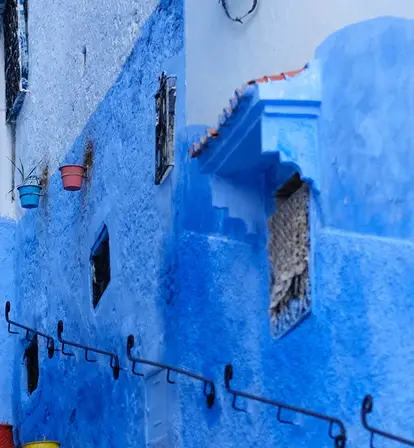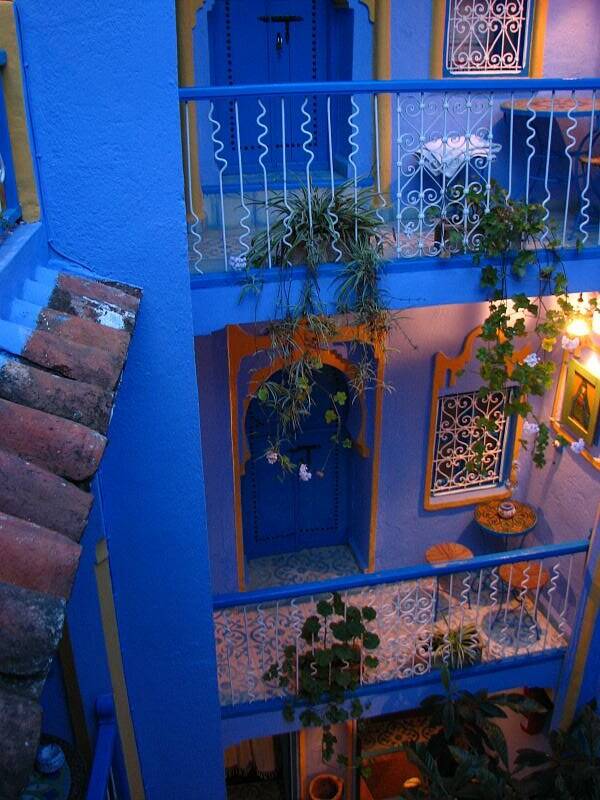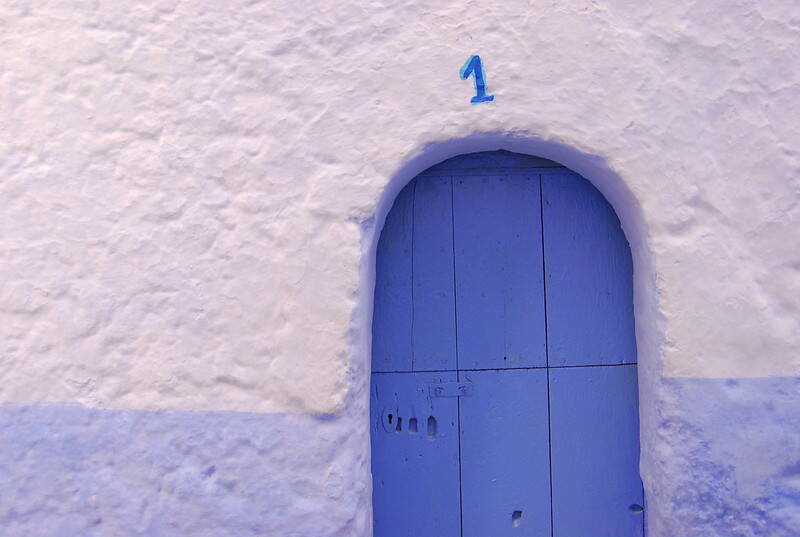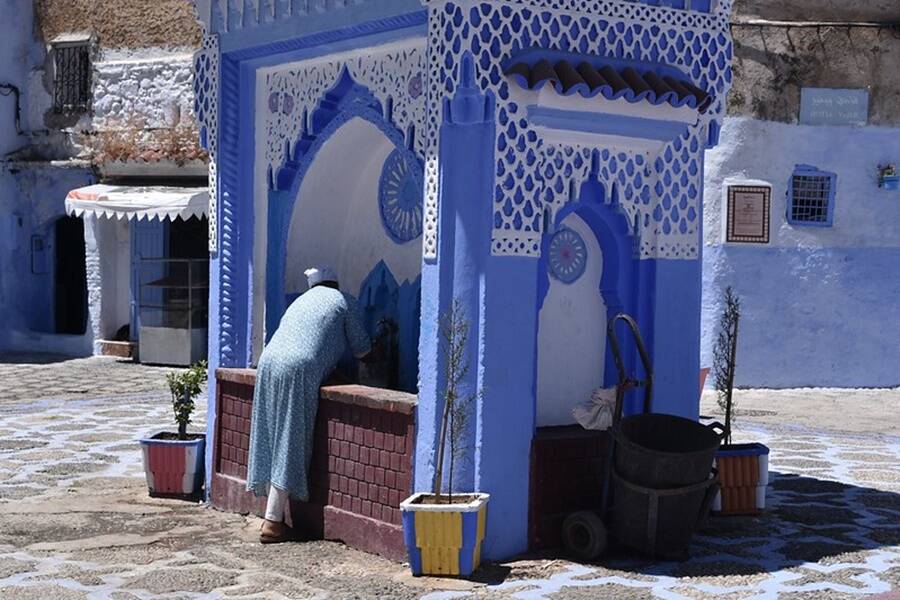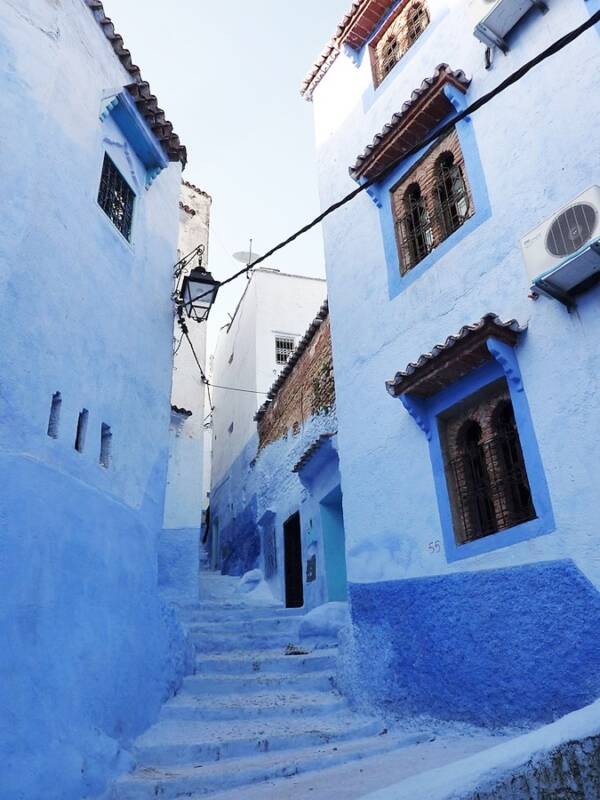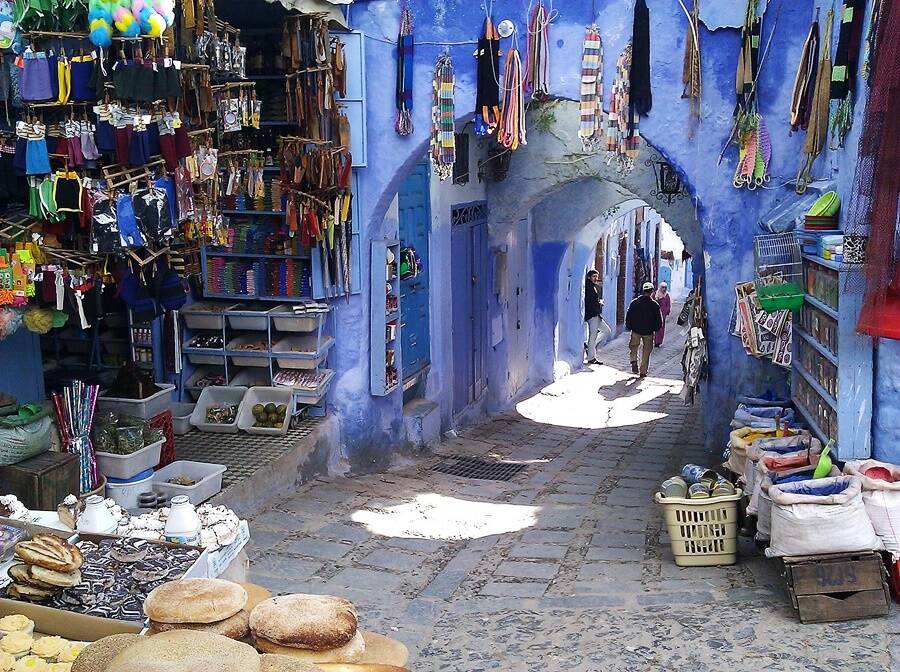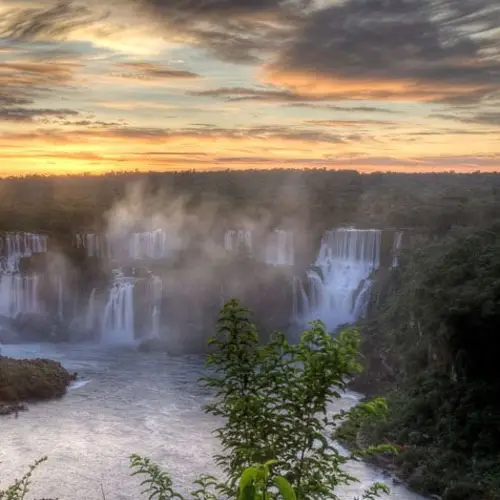Chefchaouen, known as the "Blue Pearl of Morocco," dates back to the 15th century when it was founded by refugees fleeing the Spanish Inquisition.
Travelers and lovers of unique architecture would do well to add a visit to Chefchaouen to their bucket list. Dubbed the blue pearl of Morocco, the city of Chefchaouen mesmerizes visitors with its gorgeous architecture and entirely blue buildings.
Its remarkable history dates back to the 15th century when the city was first started as a refugee settlement for Jews, Moors, and other local tribes during the Middle Ages. Despite its rich history, the exact origins of the city's striking blue facades are the subject of much debate.
Some say the town was painted various hues of blue as a way to keep mosquitos at bay, while others believe it was a deliberate design choice made by Jewish refugees due to the color's religious significance.
Nobody seems to know for sure where Chefchaouen got its eye-catching design, but the blue city continues to capture hearts and minds to this day.
Morocco's Blue City Is Not Entirely Blue


Yuriko Nakao/Getty ImagesOnly the old section of Chefchaouen is painted blue. Newer buildings in the city offer a strikingly bland contrast to the city's tinted history.
Nestled amid the Rif Mountains about two hours away from the city of Tangier is the small town of Chefchaouen, also known as Chaouen. While it's known as the blue pearl of Morocco due to the vibrant blue facades of its houses and buildings, the city is not actually entirely blue.
The bright blue walls can only be found in the medina or old section of the city. The stark contrast between the older blue-colored area of Chefchaouen against the bland exterior throughout the rest of the town provides visitors with an arresting view. It also signifies the town's rich and complex history.
During the late 15th century, King Ferdinand II of Aragon and his wife Isabella I of Castile established the Spanish Inquisition as part of a campaign to unite the Spanish kingdom under one religion: Catholicism. Those who held other faiths — primarily Muslims and Jews — were forced to choose between conversion or exile.


Yuriko Nakao/Getty ImagesNobody really knows the true origin behind the city's blue color but most suspect it came from the color's religious significance in Judaism.
Muslims and Jews fled to other parts of the world, migrating as far as North America to escape persecution. Many fled to Morocco.
At the time, the territory of Morocco was ruled under the Muslim Sa'did sharifs. It was a time of prosperity in the region due to a combined influx of Andalusian immigrants, who brought their technical expertise and the profitable Saharan trade.
Thus, Chefchaouen was founded as a refugee settlement in 1471. Islamic dynasties ruled the region and the city for centuries until it fell under Spanish conquest in the early 20th century. Morocco later regained the town, but this complex history added yet another cultural infusion to the city's heritage.
Many historians believe the town walls were painted blue because of the large number of Jewish refugees among the population. They say that in the 1930s while escaping the reign of Hitler, the Jews introduced the color blue because has strong religious significance in Judaism, representing the sky, heaven, and leading a spiritual life. Even as the Jewish population grew smaller, the city's blue buildings remained.
Despite Chefchaouen's historically mixed roots, today most residents of the city, like much of Morocco, are Muslim. Nevertheless, residents have kept up the old tradition of painting their homes blue, every so often putting up a fresh coat of the azure that makes the city the blue pearl of Morocco.
Why Did They Paint The Town Blue?
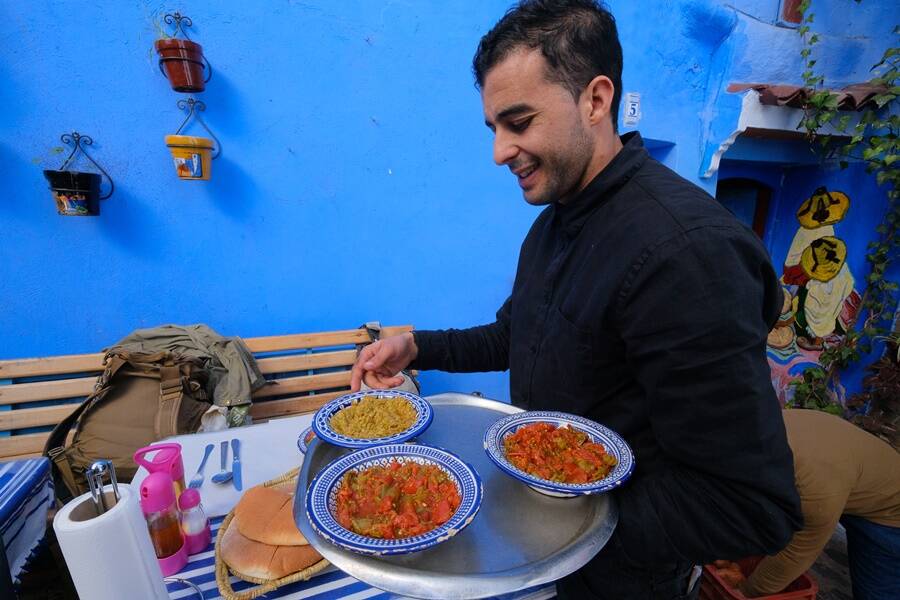

Yuriko Nakao/Getty ImagesChefchaouen, also known as Chaouen, is a popular destination for international tourists to Morocco largely due to its distinct design.
The many shades of blue in Chaouen's architecture are painted with a mixture of water, chalk, and pigment. From robin's egg blue to indigo and cobalt, the different hues have a calming effect on those who walk through its narrow streets. Because of this, the small town is frequently compared to Santorini, Greece, famous for its pristine blue-and-white exterior.
Similarly, Chefchaouen is made up of narrow cobblestone streets that go up-and-down hills. Houses and vendor stalls are covered in fantastic shades of blue from wall to wall with archways, window panels, and staircases covered in azure as well.
Although some historians and experts believe the origins of Chefchaouen's famous blue walls come from the Jewish migrants that first populated the area, this has never been fully confirmed.
Like many curiosities in the world, other theories about the city's blue facade exist. One theory claims that the North African city was painted various hues of blue to keep mosquitoes at bay. However, the myth that mosquitos are attracted to certain colors has largely been debunked.
Others suspect that Chefchaouen was painted blue for the color's soothing effect to keep temperatures cool around the city. Some say the quirky coloring may have been a nod to the Mediterranean Sea, which borders Morocco to the east.
One local artist disputes all those theories, instead suggesting that the color signifies the essence of the city itself.
"Blue was chosen because it eases the eye, especially in summer when the sun is bright," said artist Mohsine Ngadi. "Nobody is ever in a rush here; stress does not exist."
None of these claims have been successfully corroborated by historians. However, there is a strong case to be made regarding the claims related to its Jewish tradition given that the mellah, the Jewish part of the old city section, is believed to have been dressed in blue paint for longer than the rest of the town.
No matter the true reasons behind its calming, picturesque landscape, the blue city of Chefchaouen will continue to fascinate the world with its different shades of blue.
Now that you've explored the beautiful blue pearl of Morocco, discover how scientists rediscovered a rare medieval blue ink. Then, meet the Kentucky family who passed down their unusual blue skin for generations.
